 An interview with writing team Patrick Burns and Kathleen Coombs on their Artistic Process and new project, Life Sentence.
An interview with writing team Patrick Burns and Kathleen Coombs on their Artistic Process and new project, Life Sentence.
Patrick and Kathleen spent last week in the studio working on their new musical, Life Sentence, and refining their collaborative process. Stage Agent sat down with them to discuss.
Do you usually write book, music, or lyrics? What is your role on this project? How do you like that and how does that role differ from what you’re used to?
KC: While I have written several plays, I have only written one other musical. With that one, I wrote book, music, and lyrics.
PB: I’ve written music for several plays and musicals and have written one musical which was also a solo show called From Foster Care to Fabulous. On that project I wrote the book, music, and lyrics. It was a great process, but it did leave me yearning for more collaboration.
KC: With this musical, I have really enjoyed the collaboration process so far. I truly think the work comes out tighter and stronger because we have two separate viewpoints that often have to be discussed and aligned before moving forward. Once we reach agreement on a particular point, I then have added confidence that it is the right choice for the play.
PB: I agree. I was lucky on From Foster Care to Fabulous to work with a roster of fantastic directors and script doctors throughout development to help make the story as clear as possible. That’s part of why I knew I wanted to collaborate with a bookwriter on Life Sentence.
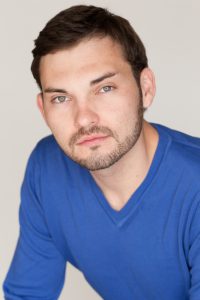
What is the most exciting thing about writing a musical?
KC: It’s merging the story with the music, whether I’m writing music or handling the script. With this show, the most exciting part for me comes when Patrick has written a song and I then get to go back into the scene I’ve written and smooth everything out. That’s when that particular moment onstage becomes real for me. Up until that point, I just have a scene with a hole in it; but when the musical drops in the magic starts to happen.
PB: The most exciting part for me has been discovering what the characters sound like. These characters have been living in my mind for a couple years now, so to sit at the piano and explore how they sing and what music brings them to life is intensely exciting.
What’s the most challenging thing about writing a musical?
KC: Why don’t you ask me that in a few months? So far, the most challenging thing about writing a musical is pacing on the page. With any play, the story has to unfold in a way that keeps the audience engaged. With certain musicals, sometimes the story gets interrupted for a song. My goal on this show is to make sure the songs feel like a continuation of plot or deepening of character – never a simple, amusing diversion. Then the pacing has to flow together smoothly so the whole play feels like a complete piece. Trying to accomplish all of that on the page before a director or actors are ever involved is no easy feat – but it is worth it.
PB: This story means so much to me. That’s the hardest part. It’s a great thing because it fuels me to do my best work. This story is about real issues that people in the United States are dealing with everyday and I don’t want any moment to feel inauthentic, glossed over, or cheap.
What can you tell us about the story?
KC: Sean, the younger of the two brothers, is a successful patent attorney in his late twenties living in Oakland, California. At the start of the play, Sean packs up dozens of letters written to him by his father during his dad’s time in prison. Sean’s boyfriend, Kevin, is finally moving in so they can begin their calm, well-decorated life together. However the merriment is interrupted by a collect call from Jason, Sean’s incarcerated brother. Jason has been released from prison and needs Sean’s help to back on his feet.
PB: Sean must decide whether to let his brother, Jason, back into his life – just when things were finally falling into place. Jason has been in and out of prison before and Sean has no reason to trust that this time will be any different. But for Jason, this time is different; this time he has a girlfriend. He’s in love and therefore has a little more hope.
Sounds heavy!
PB: We promise there will be lots of laughter and catchy songs to balance the heavy lifting!
How do you approach the task of writing a song?
KC: Whether I am writing music and lyrics or the book, I always ask myself the same question, “What does this moment need to accomplish?” Once I have figured out the plot and character movements the song explores, then I can focus on the deeper question of “How can I explore that musically?” But I find if I don’t ground the intention of the song in plot and character, it quickly becomes difficult to write.
PB: Usually I obsess over which avenue to take and what the song needs to say. The great thing about having a smart bookwriter is that I can obsess less and collaborate more. Oooh! I should have that painted on my wall…
What do you do to get to know a character?
PB: Girl, I make a playlist. My first question is always “What music does this character play and sing along to when no one else is around?” That can tell you a lot about a person and also surprise you. I’ll never forget the day I caught my mom listening to 2pac. She just looked up and said, “All eyez on me!”
KC: I have a list of questions I’ve honed over the years when I’m working out a character. Some of them are basic things like age, occupation, likes/dislikes. But I also have some oddball questions in there about first kisses, pet peeves, and other habits. I try to answer every question before I begin writing, but often as I’m writing I will realize I have an answer wrong and I’ll have to go back and change it. That’s really the fun part. One can never really know the characters until they meet them on the page. And they will show themselves to you if you just relax and let them.
PB: I also like to improvise as the character when I’m writing. I have an improv background so this comes naturally to me. Talking out loud and moving as the character can give me a ton of insight. Movement dictates rhythms, and vocal patterns can inspire melody.
What did you learn this week together? Was this your first week collaborating together in the studio on this project?
PB: A couple of years ago, gosh, was that 2016?
KC: It was!
PB: How time flies! Well, in 2016, we got together to talk about the story. I first came up with the idea for this show in 2012. I had another bookwriter on the project at the time, but by 2016 I had asked Kate (Kathleen) to come onto the project. We were both living in Los Angeles at the time, and we went up to Arroyo Grande for a weekend to outline a story. We got some great work done but didn’t actually write anything. Since then we’ve repeatedly put this project on the backburner. In the fall of 2017 we received a developmental grant from the Speranza Foundation so that we could get in the studio together and really get writing. So, that’s how we were able to get together last week in Austin, TX. (Kate lives in Austin now and I’m in NYC).
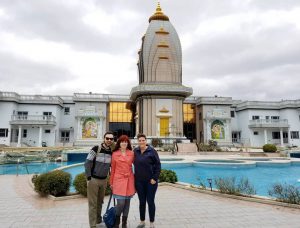
KC: For one, I learned a lot just from witnessing Patrick’s process. I love watching other people create and learning how they like to dive into the work. That helps me see how we can work together. Most importantly, I think Patrick and I learned how to collaborate with one another. I think each collaboration has different moving parts and part of our job as artists is to figure out how best those parts work together. Having a chance to finally work together in person allowed us to find a process for shaping songs and plot that will continue to serve us even while we’re in different states.
PB: I agree. We had been working over Skype and the phone. We would get some great work done, but we weren’t ever able to fully dive in. We were really able to find a rhythm and lay ground rules together in person.
How did collaborating long distance differ from collaborating in person?
PB: In person was infinitely better.
KC: There’s a certain synergistic energy that occurs when two people work together in the same room. We may get a spark of that on the phone, but in person it can be a real wildfire.
PB: It gives a chance for the spark to grow. When you get a spark on the phone, you write it down and say, “Let’s explore that separately and revisit at our next meeting”, but in person you explore it in the now which leads to growing the fire.
KC: That’s why we do live theatre, right? So in person it was easier to build that momentum into a focused frenzy. My hope is that we can now stoke that same fire to keep it going, rather than having to start over on every collaborative phone call.
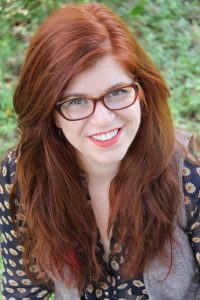
How does technology affect collaboration?
KC: We are very lucky to be able to use technology like Google documents, Final Draft notes and collaboration modes, and even just Skype and phone calls. When I was a kid, long-distance calls were pricey (I know, I’m soooo old). So I’m grateful we have different ways to work together even when we’re far away. A nice benefit to this is that there is also often a record of our work. If I have a question about an old version of a scene, for example, I can just pull up the document we created it on. I can also read through old chat conversations to find idea we may have tossed aside. It’s invaluable.
PB: That’s probably the most useful thing for me is that I have all my programs set to autodate each draft and autosave everything as I work. Especially when I’m deep into a creative project, I tend to forget to prioritize organization and record keeping.
What are some ways you successfully create goals and stay on track?
KC: Patrick has been really helpful with focused goal-setting on this project. I must admit, I tend toward a mindset of “do as much as you can as often as you can.” That may sound like a great idea, but the truth is that without specific goals, you have no way to hold yourself accountable. When you make incremental goals, you are then able to follow them until you reach the ultimate goal. Sound simple? It is. But in simplicity there is clarity.
PB: Part of that is because I’ve really worked to up my goal game in 2017 and I’m riding that wave into 2018. We have so many distractions in our lives these days. Between technology, making a living, and having a personal life, I often felt like my true goals were falling to the wayside. So, I’m glad to hear Kate say she’s noticed that work. It’s important to remember that if you don’t make goals and hold yourself to them, you aren’t going to meet them. That’s no one’s fault but your own.
What advice would you give aspiring musical writers?
KC: Firstly I would tell you to study those who came before you, even if you don’t like their work. You may find that once you really begin to dig into their work, you might actually like some of it. And the work you still don’t like will have a lot to teach you about what not to do. Secondly, just keep writing. You may have to write a lot of, eh, less-than-brilliant pages before you get to the good stuff. So get started now!
PB: If you feel like you have something to say, then go out and find a way to say it. Don’t worry about being the best or the edgiest or the flashiest. If you have a drive to tell a story, then someone will want to hear it and that’s the most important part.

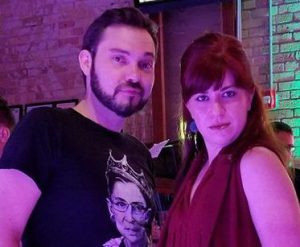 An interview with writing team Patrick Burns and Kathleen Coombs on their Artistic Process and new project, Life Sentence.
An interview with writing team Patrick Burns and Kathleen Coombs on their Artistic Process and new project, Life Sentence.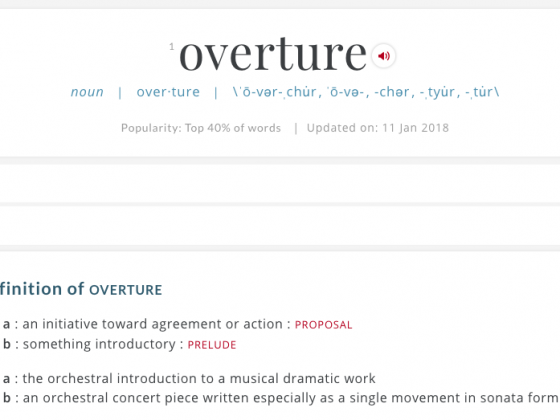
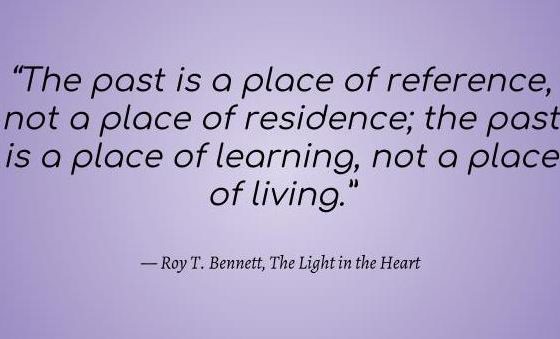
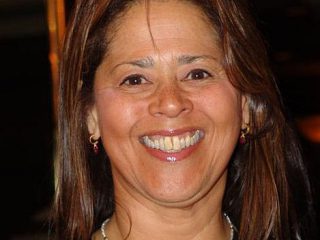
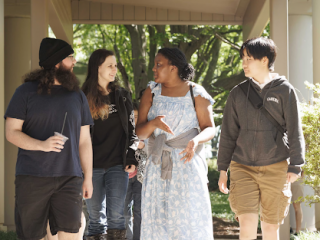
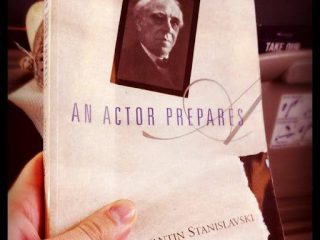
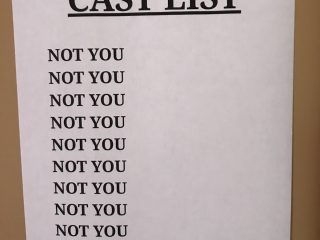
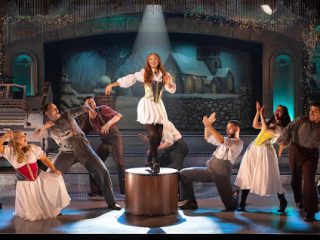


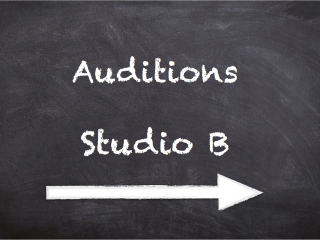




1 comment
To Patrick Burns:
Do you have any guidelines on what a librettist should charge for writing a new musical’s book?
thanks and please email me your comments to me.
Richard Lasser